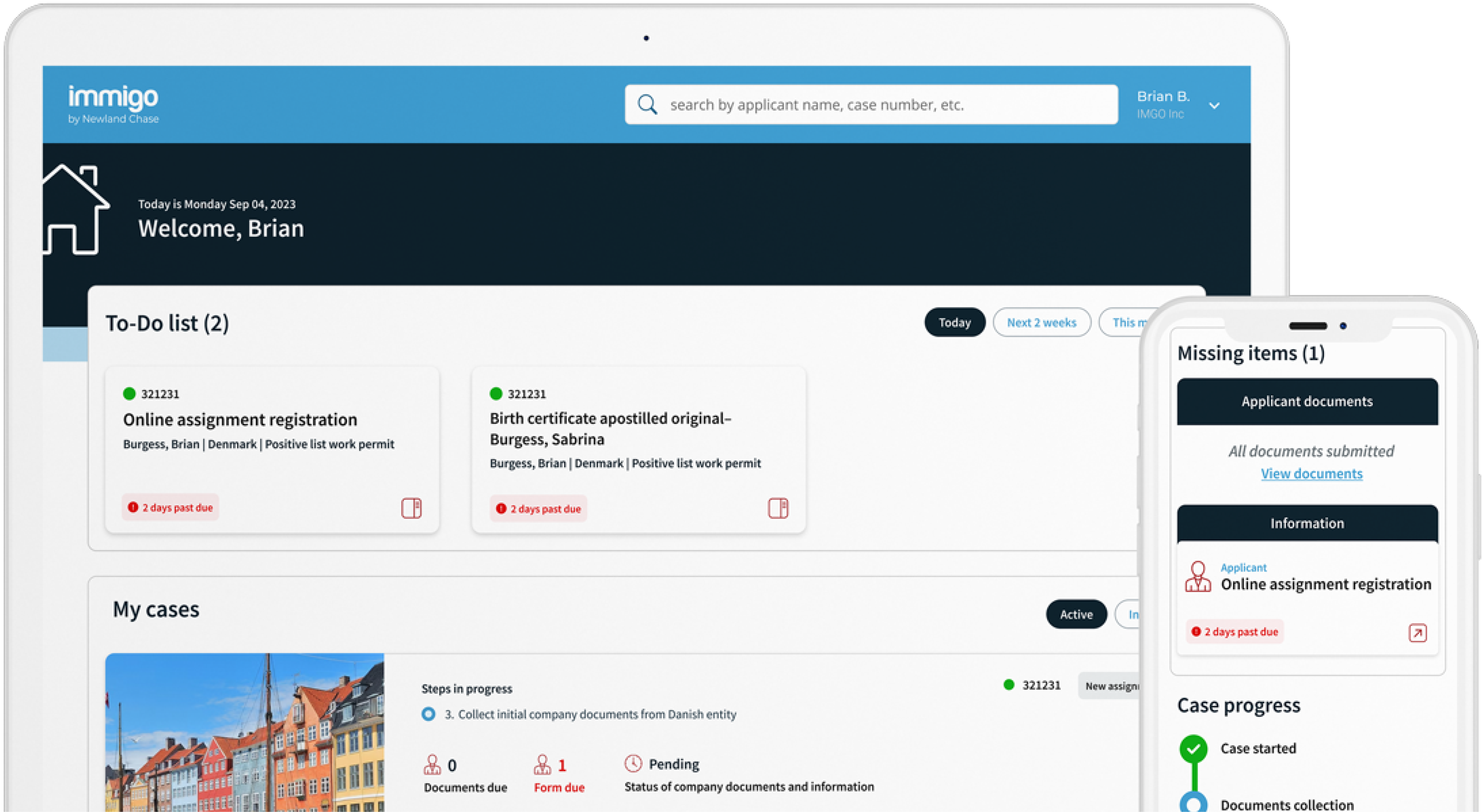Get The Visibility Your Company Needs
Reduce compliance risks and mobility costs while managing individual and project-related travel with ImmiSMART: the solution that unifies your travel and mobility programs.
Harnessing the L-1 visa through strategic secondments: Why US companies should make programmatic changes to remain ahead of the curve.
September 19, 2024
By: Justin Scott Kadich, Senior Immigration Attorney, Go Global Immigration PLLC.
Upon first learning of the failed Bay of Pigs operation in Cuba in 1961, famed broadcaster and former Director of the United States Information Agency (USIA) Edward R. Murrow once grumbled, “If they want me in on the crash landings, I’d better damn well be in on the take-offs”. He was anticipating all the additional work he would need to do to rebuild America’s image after the failed attempted overthrow of Fidel Castro.
What does Murrow’s quote have to do with U.S. business immigration? Quite a bit, it turns out. During a decade spent working exclusively on U.S. business immigration, I have unfortunately been contacted frequently during the “crash landings”. The typical situation usually involves a highly skilled foreign worker who is urgently maxing out of work authorization and/or legal status in the United States. The company is frantically trying to solve the problem and is willing to pay top dollar to do so. Absent being able to find a creative U.S. immigration solution, typically there is no workaround, and the worker is forced to leave the US, causing significant disruption, stress, and cost for the company.
The good news is that through advanced planning at the “takeoff” phase by experienced U.S. immigration and HR professionals, most of these situations are completely avoidable. With timely input from U.S. immigration professionals (including partnering with the company to develop HR policies and secondments outside the US that are consistent with the legal requirements and foreign talent acquisition strategy of the company), we can help eliminate many (if not all) of these “crash landings”. Instead of dealing with these emergencies, the company will have peace of mind knowing that the foreign worker should have uninterrupted legal status and work authorization in the US (from the time of hiring until the foreign worker receives their U.S. Green Card). This will prevent the cost, stress, uncertainty, and risk associated with these events for all parties.
One powerful tool that allows multinational companies to proactively address U.S. immigration challenges is the L-1 visa.
What is an L-1 visa?
The L-1 visa is a US non-immigrant work visa specifically designed for intracompany transferees. It is a popular choice for multinational companies to transfer important employees to work in the United States on a temporary basis. The L-1 visa is divided into three categories which all have related, but different legal requirements.
L-1A: For executives and managers; 7-year maximum.
L-1B: For employees with specialized knowledge; 5-year maximum.
L-1: For establishing a “new office”. (The worker can qualify under L-1A or L-1B.)
This visa is particularly valuable for multinational companies as it offers several advantages over the H-1B visa (a popular alternative U.S. work visa). Such advantages include:
- New applications do not require being selected in a lottery.
- The L-1 visa is not location specific and therefore requires less Amendments.
- There is no required salary for L-1 employees.
Given that odds of being selected in the H-1B lottery dramatically decreased last year, it is clear that the L-1 visa is the superior option.
L-1 visa requirements
The requirements for the L-1 visas are as follows:
For the candidate (L-1 applicant)
Employment with a qualifying organization: The candidate must be currently employed outside the US for a qualifying multinational organization that has a related entity in the United States. Please note that the candidate must be a parent company, subsidiary, affiliate, or branch office of the U.S. entity.
Position qualification:
- For L-1A (managers or executives), the employee must be currently employed outside the US in a managerial or executive capacity and the purpose of the transfer to the US must be to work in a managerial or executive capacity. This typically involves having direct reports in the US, overseeing a significant portion of the company’s operations or managing an important function.
- For L-1B (specialized knowledge), the employee must be currently employed outside the US for a qualifying multinational organization and possess specialized knowledge of the organization’s products, services, technology, or procedures. Specialized knowledge means advanced knowledge that is not commonly possessed by other employees in the industry.
One year of employment: The employee must have worked for the foreign company continuously for at least one year within the three years immediately preceding the L-1 visa application. This period of employment must have occurred outside the US.
For the employer (sponsor)
Qualifying relationship: The U.S. employer must have a “qualifying relationship” with the foreign entity employing the visa holder. This relationship must be one of the following relationships: 1) Parent, 2) subsidiary, 3) affiliate, or 4) branch office. Please note in the case of a subsidiary, where the U.S. company owns less than 50 percent of the foreign company, the U.S. company must demonstrate a significant level of control over the foreign company in order to qualify for the visa.
Conducting business in the US: The U.S. employer must be actively doing business in the US and must have a physical office location where the employee will work. Please note that an L-1 “new office” petition requires that the employer show that they have “secured sufficient physical premises” for the office.
Offer of employment: The U.S. employer must extend a valid employment offer to employee and must file an L-1 petition with U.S. Citizenship and Immigration Services (USCIS) on the employee’s behalf.
The case for strategic secondments to allow foreign workers to regain work eligibility in the United States
As shown above, the key requirements for the L-1 visa are that the candidate must have worked for the foreign company continuously for at least one year within the three years before the application is filed and that they have worked in and are transferring to the US to work in a managerial capacity (L-1A), specialized knowledge (L-1B), or in order to open a new U.S. office.
This article proposes that U.S. companies would be best served by proactively incorporating planned secondments outside the US as part of their foreign national talent acquisition strategy to minimize the chances of a disruption of work authorization in the US. Based upon my experience with “crash landings”, the secondment outside the US in order to regain U.S. work authorization is the preferred solution for the company and the foreign worker.
Yet, despite this foreseeable occurrence, it is perplexing that more U.S. companies do not plan for this in advance. If companies were to proactively develop planned secondments for the foreign workers they expect to work permanently in the US (until they receive their green cards) they would save themselves a great deal of effort, time and expense.
Finally, it should be noted that this approach would likely have the support of the majority of foreign workers who wish to work in the US as it offers them the easiest path to eventual work authorization, will minimize the chances of an unanticipated loss of legal status and work authorization, and the secondment may have the added advantage of accelerating their green card eligibility, as the qualifications for the L-1A and the EB-1c Multinational Manager Employment Green Card process are very similar. It should also be noted that the EB-1c matter would allow the employer and the employee to skip the lengthy and uncertain PERM process in order to receive a green card.
Conclusion
For U.S. companies aiming to stay competitive in the global market, making programmatic changes to immigration policies through strategic secondments can be a game-changer. By planning secondments to qualify for L-1 visas, companies can enhance their global talent management, improve compliance, and address talent gaps effectively. Embracing this approach not only benefits the company’s operations but also strengthens its position in the international arena, paving the way for sustained growth and success.
By rethinking and optimizing their approach to immigration, U.S. companies can unlock new opportunities for growth and innovation, ultimately driving their success in a dynamic global market.
At Go Global Immigration, PLLC we offer extensive advisory services for your U.S. business immigration needs including partnering with your company to make programmatic company policies that will keep you compliant in an uncertain U.S. immigration environment and save your company time and resources by making proactive changes based upon the latest legal guidance. Please reach out to us to discuss your U.S. immigration needs.
Justin Scott Kadich is a senior immigration attorney at Go Global Immigration, PLLC, a boutique law firm specializing in supporting organizations to build and grow their US Immigration program. Go Global Immigration is an independent, U.S. immigration law firm that is affiliated with CIBT/ Newland Chase. Go Global Immigration’s attorneys strategize and implement practical employment-related immigration sponsorship strategies that enable U.S. companies to hire and retain foreign talent.
This immigration update is for informational purposes only and is not a substitute for legal or scenario-specific advice. Furthermore, it is important to note that immigration announcements are subject to sudden and unexpected changes. Readers are encouraged to reach out to Newland Chase for any case or company-specific assessments.




